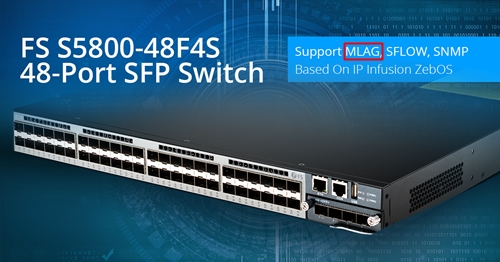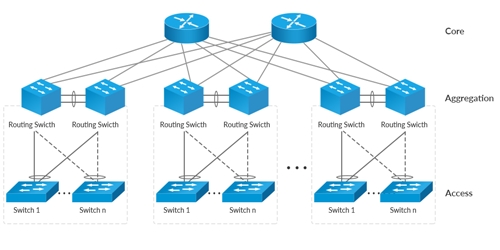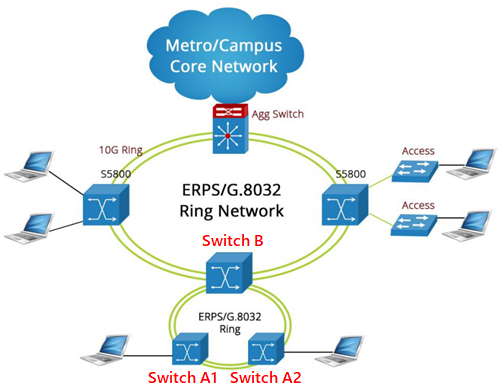When buying a layer 3 capable 10GbE switch, we usually see product obviously described as owning multiple advanced features like MLAG, IPv4/IPv6 and sFLOW. But many people don’t know what they refer to. This article will focus on MLAG networking to illustrate what is MLAG, MLAG configuration advantages, and how to implement MC-LAG networking with Ethernet switch.

Figure 1: S5800-48F4S 48 port SFP switch supports MC-LAG networking.
MC-LAG networking is a networking type achieved by MC-LAG technology. MLAG (MC-LAG), abbreviation for Multi-Chassis Link Aggregation Group, is a new multi-device link aggregation technology for data center Ethernet switches. MLAG configuration centralizes constituent ports on separate chassis, mainly serves as reliable load functionality to increase bandwidth and provide redundancy in emergent breakdown of one of the device. MC-LAG networking is introduced by Arista in 2012. LAG is defined in the IEEE 802.1AX-2008 standard, where MC-LAG is not involved. Instead, MLAG implementations are vendor-specific. Say MC-LAG Juniper and mLACP Cisco. However, the combined chassis is still compliant to the IEEE 802.1AX-2008 standard.
Rooted in LAG but not ceased to advance, MC-LAG adds node-level redundancy to the normal link-level redundancy. As thus MLAG networking enables more virtual switches to simultaneously share the same LAG endpoint. In this way bandwidth is expanded and redundancy is enhanced once again.

Figure 2: A comparison of LAG networking vs MLAG networking configuration.
What’s the significant difference between MLAG vs STP (Spanning Tree Protocol)? Generally MC-LAG HA (High Availability) configuration is superior to Spanning Tree. Counting the MLAG configuration crossing “X”, all links can share the load during normal operation. However, Spanning Tree must disable some links to achieve loop prevention.

Figure 3: An illustration of HA MC-LAG implementation with multiple Ethernet switches link in data center three-layer architecture.
To illustrate the MC-LAG configuration method, take S5800-48F4S 48 port managed gigabit SFP switch as example. This low latency layer2/3 Ethernet switch is designed as carrier access switch and caters for 10G link aggregation networks. With advanced feature including MC-LAG, MPLS, IPv4/IPv6, SFLOW, SNMP etc. supported, this 10GbE switch is ideal for MLAG networking.
To implement MLAG, 4 10GE SFP+ ports on the 48 port switch can simultaneously be connected to multiple switches. As the following figure shows, connecting S5800-48F4S switch A1 with A2, and then linking the virtual Switch A (switch A1 and A2 as a whole) with S5800-48F4S switch B, a simple LAG + MCLAG networking is implemented. To go further to MLAG + MLAG configuration, S5800-48F4S switch B can also be replaced by two linked switches switch B1 and B2. As thus 4 × 10GbE uplink bandwidth is achieved. Meanwhile more switches share the endpoint 10GbE bandwidth at the same time. Besides, node-level redundancy is added to link-level redundancy due to two nodes on one link. For instance, the switch A2 can function well while switch A1 fails.

Figure 4: Deploying S5800-48F4S 48 port 10GbE switch for MC-LAG implementation.
MC-LAG networking is superior over LAG technology due to node-level redundancy added to link-level redundancy. The HA MLAG configuration also surpasses spanning tree for no link drop is required in loop prevention. Buying 10GbE switch for MLAG implementation, S5800-48F4S SFP switch is a natural fit to go. And for cases where power cabling is unavailable for your PoE powered devices (PD), you can consider buying a gigabit PoE switch as access switch for you MLAG networking.
